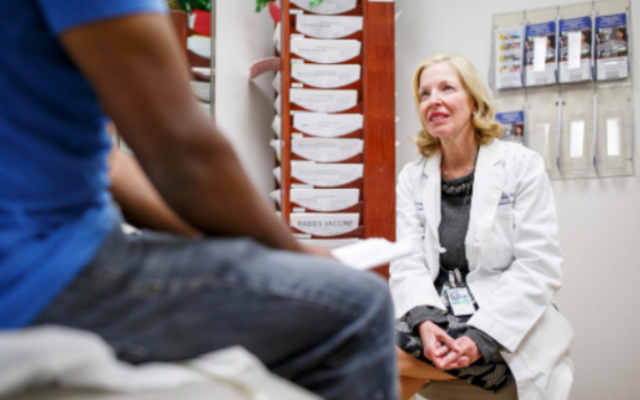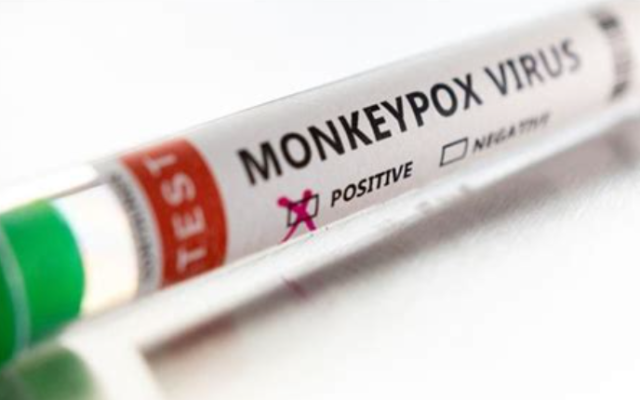Georgia Ranks Fifth in Monkeypox Infections
Only the more populous states of New York, California, Texas and Florida currently have more cases.
According to the latest statistics, Georgia has become one of the nation’s monkeypox hotspots. As of Aug. 17, the Centers for Disease Control and Prevention (CDC) ranked the state fifth in the nation in total number of cases, with just over a thousand confirmed. Only the more populous states of New York, California, Texas and Florida currently have more cases.
The latest statistics indicate that monkeypox infections have doubled in the nearly three weeks since early August when the outbreak was declared a national public health emergency.
This move by the Biden administration gives Secretary of Health and Human Services Xavier Becerra the ability to devote more money and resources to the effort to control the outbreak. In a briefing on Aug. 4, Becerra called for more action to fight the epidemic.
“We’re prepared to take our response to the next level in addressing this virus and we urge every American to take monkeypox seriously and to take responsibility to help tackle this virus,” he said.

In the same briefing, CDC Director Dr. Rochelle Walensky pointed out that the numbers have grown despite the fact that the U.S. had been using only 10 percent of its available testing capacity. There has also been a shortage of the vaccine used to protect against the monkeypox virus.
On Aug. 9, the Food and Drug Administration approved a controversial emergency plan to split available injections using what is called “dose sparing,” in which only 1/5th of the usual vaccine is injected into the top layers of the skin rather than deeper into the muscle. The procedure is said to distribute the vaccine more quickly and effectively throughout the body.
Still, according to Dr. Phyllis Kozarsky, who has been a distinguished professor of infectious diseases at the Emory School of Medicine for over 35 years, there is still a lot to be done in fighting the monkeypox epidemic.
“There were many, many caveats in making a clinical diagnosis,” Kozarsky told the AJT. “One has to fill out over 20 pages of forms in order to get the drugs that treat it. And the vaccine isn’t getting to where it needs to be and people don’t always know how to access it. And providers, most importantly, don’t have a great deal of understanding about the illness. So there are a lot of public health barriers and social barriers to managing this infection right now.”
For years, monkeypox, which is related to the much more serious smallpox virus, was virtually unknown in this country. There were small outbreaks in Africa, where the disease was first discovered in 1958, but those outbreaks were quickly contained. That is not the case this time, experts say. Georgia, for example, which confirmed the first case only on June 6, reported 1,013 cases by Aug. 17.

While symptoms of the infection are not nearly as serious as those of the original COVID variant, some of the same factors in the rapid spread of monkeypox are still in play, Kozarsky says.
“It’s a COVID-like situation. We are suffering from the same kinds of difficulties with our public health response to it, which makes it a little bit more of a problem than it probably could have or should have been. Just like we did with COVID originally, we are not getting, number one, enough information. Number two, we are not getting rapid diagnostics. Number three, we are not working on prevention. And number four, we are not getting treatment out to a large percentage of the population who is at highest risk,” she said.
The challenges presented by the monkeypox outbreak come at a time when the worst effects of the COVID pandemic appear to have receded. Hospitalizations and deaths from the disease in the U.S. are way down, although the long-term effects of the virus are still not fully understood.

A study of 1.28 million people who came down with the illness, published on Aug. 17 in the prestigious British journal Lancet Psychiatry, examined its long-term effects on the brain. The research claimed that for up to two years after an infection, patients were at great risk for ailments such as brain fog, psychosis, seizures and dementia. Moreover, the CDC claims it is a growing problem worldwide, with one out of every five people experiencing symptoms of long-term COVID.
As if this is not troubling enough, polio, the once-dreaded disease believed to have been eradicated decades ago by mass vaccinations, has re-appeared. The virus has shown up in wastewater samples taken in Jerusalem, London and New York and a case of paralytic polio was diagnosed earlier this year in an ultra-Orthodox patient living just outside New York City.
Dr. Kozarsky believes there is reason to be cautious as students head back to school and travel picks up again. Kozarsky, who helped pioneer the field of international travel medicine when she opened her TravelWell clinic at Emory’s Midtown Hospital in 1988, believes that we have been lulled into believing we are more protected from disease than we are.
“We have been very complacent,” she says. “We assumed that all was taken care of by the shots we gave to kids and some new antibiotics. We thought we were free from these nasty infections. We put our blinders on. If something is not going on in our backyard, then it doesn’t exist.”
- Monkeypox
- long-term COVID
- polio
- ultra-Orthodox
- TravelWell clinic
- Emory Medical School
- Lancet Psychiatry
- Xavier Becerra
- dose sparing vaccine
- News
- Local
- Bob Bahr
- Centers for Disease Control and Prevention (CDC)
- Secretary of Health and Human Services Xavier Becerra
- Director Dr. Rochelle Walensky
- Food and Drug Administration
- Dr. Phyllis Kozarsky
- COVID variant




comments